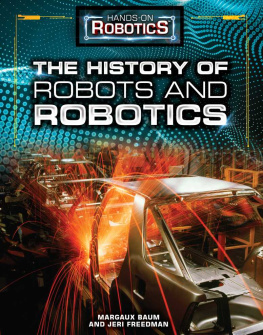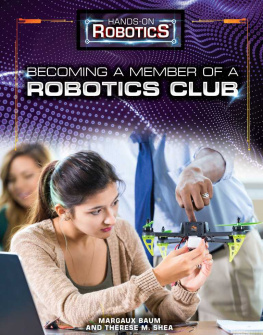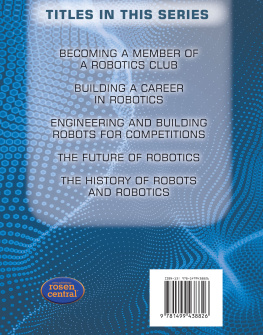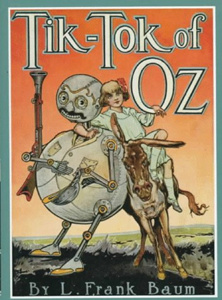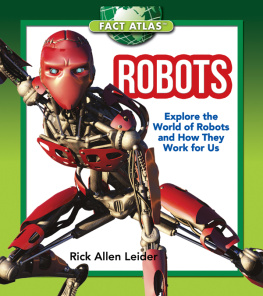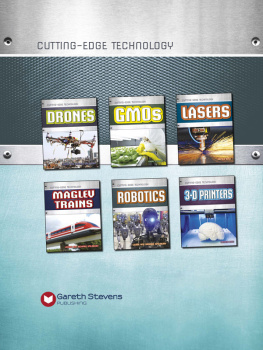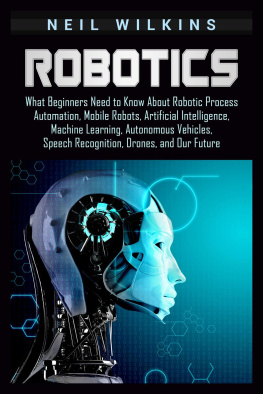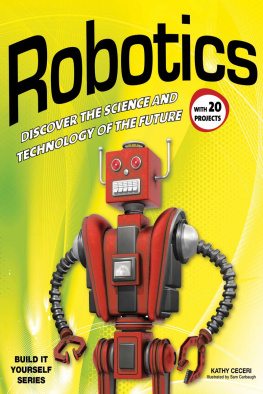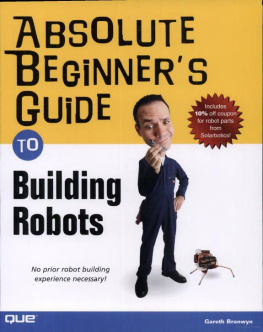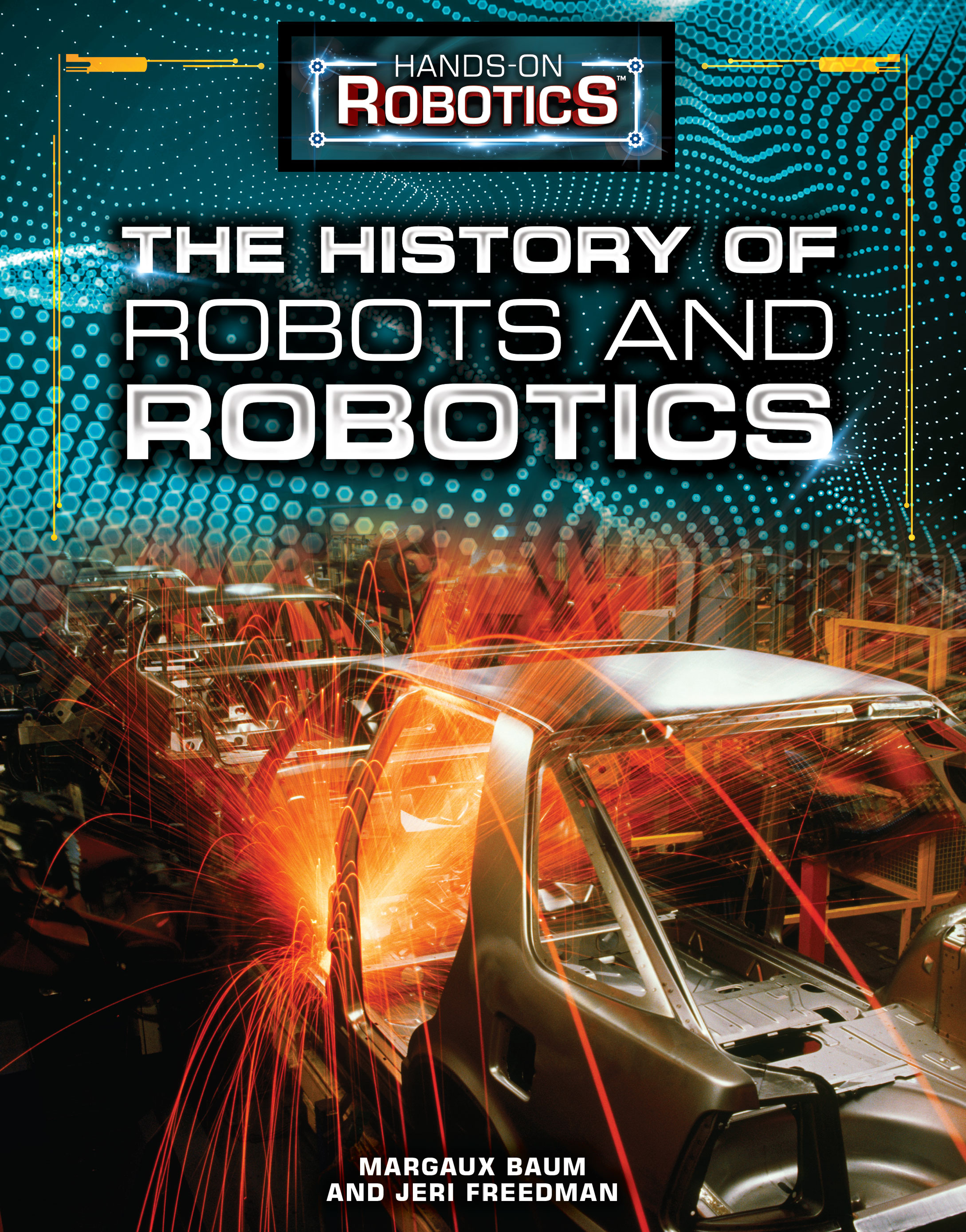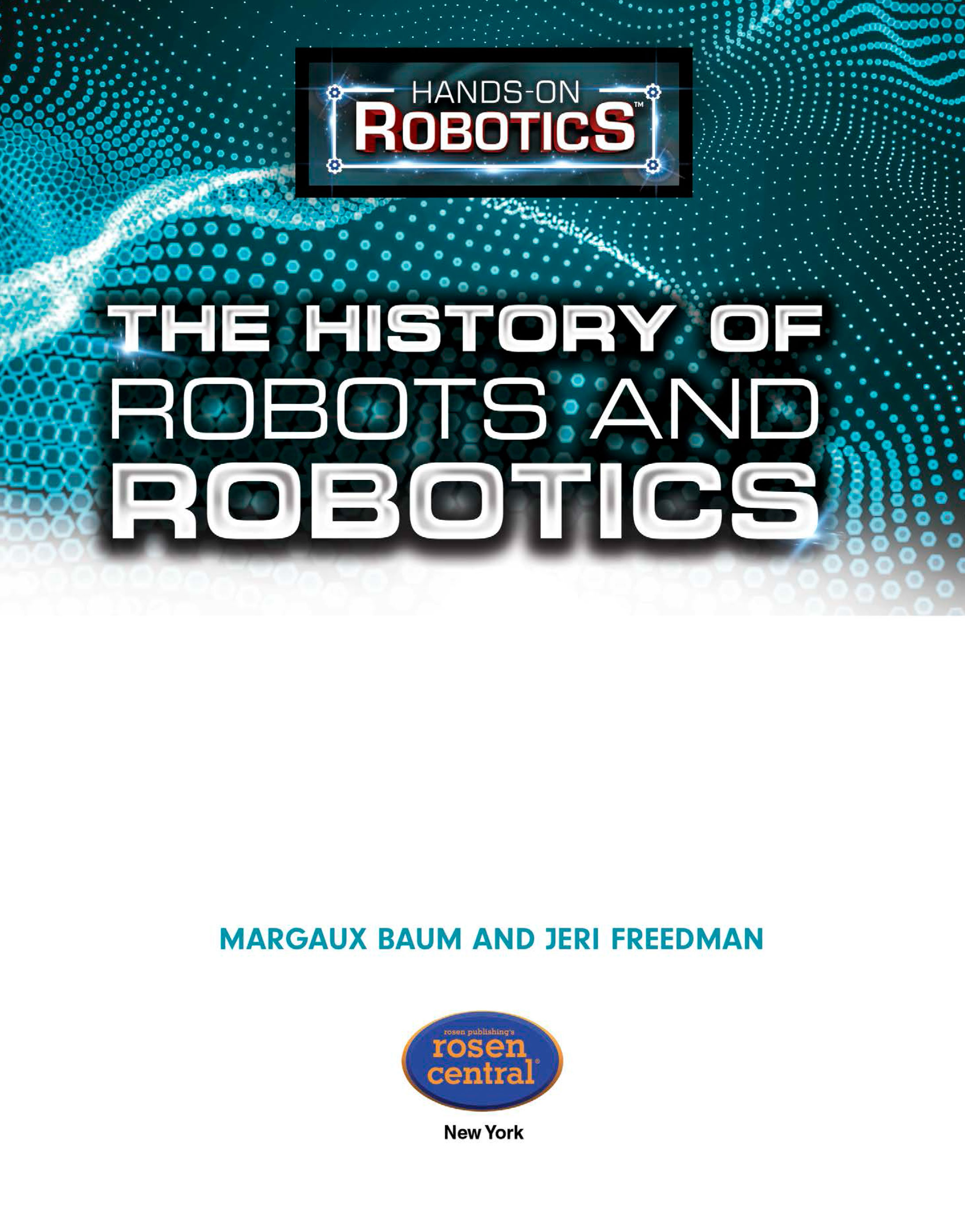- CHAPTER ONE
BEFORE ROBOTS - CHAPTER TWO
THE ERA OF AUTOMATION - CHAPTER THREE
ELECTRONICS AND AI - CHAPTER FOUR
MOBILE ROBOTS AND BEYOND
Published in 2018 by The Rosen Publishing Group, Inc. 29 East 21st Street, New York, NY 10010
Copyright 2018 by The Rosen Publishing Group, Inc.
First Edition
All rights reserved. No part of this book may be reproduced in any form without permission in writing from the publisher, except by a reviewer.
Library of Congress Cataloging-in-Publication Data
Names: Baum, Margaux, author. | Freedman, Jeri, author.
Title: The history of robots and robotics / Margaux Baum and Jeri Freedman. Description: New York : Rosen Publishing, 2018 | Series: Hands-on robotics | Includes bibliographical references and index. | Audience: Grades 5-8. Identifiers: LCCN 2017026424| ISBN 9781499438932 (library bound) | ISBN 9781499438925 (pbk.) | ISBN 9781499439380 (6 pack)
Subjects: LCSH: RoboticsHistoryJuvenile literature. | RobotsHistory Juvenile literature.
Classification: LCC TJ211.2 .B385 2018 | DDC 629.8/9209dc23 LC record available at https://lccn.loc.gov/2017026424
Manufactured in the United States of America
CHAPTER ONE
BEFORE ROBOTS
CHAPTER TWO
THE ERA OF AUTOMATION
CHAPTER THREE
ELECTRONICS AND AI
CHAPTER FOUR
MOBILE ROBOTS AND BEYOND
H umans have always imagined artificial people or mechanical humanoidscommonly known as robots that would perform tasks similar to those performed by people, and even envisioned ones that had humanlike thoughts and motivations.
After hundreds of years of dreaming of and dreaming up robots, humanity has succeeded this past century in transforming science fiction into science fact. Robots were deployed onto factory floors in the twentieth century. These days, robots stand poised to make an impact on battlefields and crime scenes, in hospitals and hotels, in banks and restaurants, on the roads and in households.
Robotics is a field that will see many breakthroughs in the near future that will far surpass the advances of the last few decades. Mechanics, electronics, and software make up the three main areas of robotics that will likely transform our society and culture dramatically.
Artificial humans of one kind or another have existed in many different cultures since the beginning of recorded history. For much of this time, they were envisioned or conceived as replacements for people, machines that would do work in humans place.
Robots have certainly captivated novelists, filmmakers, and other creative people throughout the centuries. Many books, films, and other texts have featured robot characters. Some are helpful and friendly, like the droids from the Star Wars franchise of films, the lovable title character of Wall-E, or the robot housekeeper Rosie from the 1960s animated sitcom The Jetsons. Others have been fearsome, and have expressed human fears of technology, including the assassin robot in The Terminatorfilms, and many other science fiction, horror, and thriller movies. The fear of robots either enslaving humanity in some way, or stripping us somehow of our very humanity has also been a favorite aspect of many speculative robot stories.
The popular imagination of what robots look like has varied widely over time. Here is a recent interpretationthe title character from the 2008 computer-animated science fiction comedy Wall-E.
Many robot narratives have been more ambiguous. Robots may end up serving food in fast food and other eateries, cleaning hotel beds, processing humans applications at government offices, and be involved in many other tasks and processes in our society that may displace workers and also challenge the way we have done things for a long time.
The real-life robots we may encounter in our lifetimes may be both frightening and friendly, from firearm-equipped law enforcement robots and hovering military drones, to more pet-like contraptions, like mechanical family pets that perform programmed tasks and even provide companionship. To understand where things are going for humans and their robotic creations, however, it will be helpful to track where our conceptions of robots arise from, how actual robotic technologies have evolved over time, and what place robots have in our present-day society, and what promise they hold for tomorrow.
T he Czech writer and playwright Karl Capek coined the term robot in 1920, in a play called R.U.R. (which stood for Rossums Universal Robots). It depicted artificial people created in a factory. Derived from the Czech word for work (robota), specifically forced labor performed by feudal serfs (servant farmers in medieval times), the concept of the robot was most tied to work.
The industrial age at the time had changed production from a small-scale affair in the eighteenth century into a massive endeavor, with many automated mechanical systems now doing the work of many men. In these systems, many thinkers observed, men also became more like machines.
In the later twentieth century, actual robots came online and replaced human beings in many industrial processes. While automation definitely wiped out many former working-class jobs before, in recent years this process has accelerated. According to Ball State Universitys Center for Business and Economic Research, 85 percent of the 5.6 million factory jobs that disappeared from 2000 to 2010 were lost due to technological changelargely automation.
Robots can be stationary, like those that assemble products on an assembly line, or mobile like the Mars Rover, scouting the terrain of remote locations. Some of the most fascinating robots are those that mimic lifewhether they are robotic insects designed in a Massachusetts Institute of Technology (MIT) lab, or humanoid robots, like ones created by Japanese automaker Hondas research labs.
The basic mechanical principles that allowed the development of automated machines and robotlike mechanisms were laid down well before modern times. The ancient Greeks were especially skilled at creating mechanical devices. Ancient Greek texts provide a record of a number of automated machines, including construction cranes, catapults, and water clocks with moving figures produced by Ctesibius (ca. third century BCE).
AUTOMATION IN ANTIQUITY
In the third century BCE, a work called Mechanics was written in Greece. It is attributed to the philosopher Aristotle (384-322 BCE). Mechanics describes a number of devices that are key to automating machines: levers, rollers, and gears, simple and compound pulleys, and other mechanical components. These basic devices are still used today in machines.

